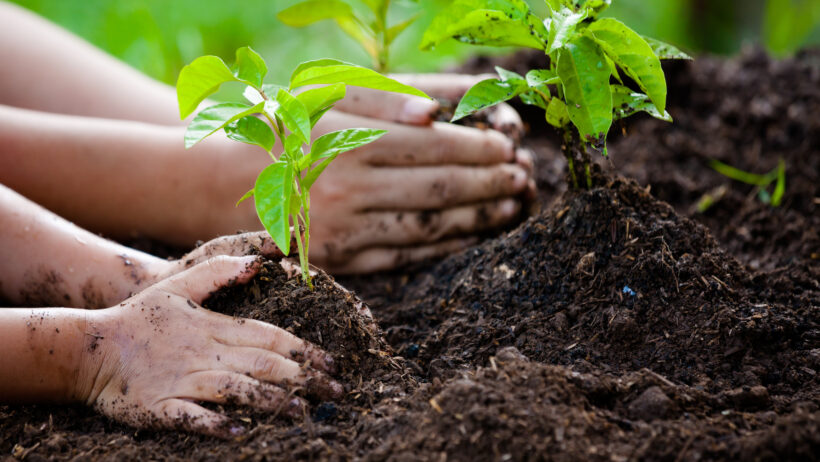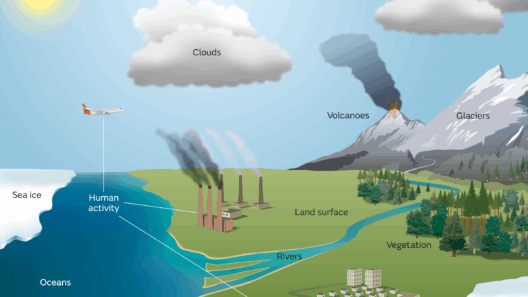In the quest to mitigate climate change and engender a sustainable future, one of the most accessible and effective strategies lies in the deliberate act of planting trees. These stalwart sentinels of the earth not only provide aesthetic value and biodiversity but also play a pivotal role in regulating temperatures and enhancing the planetary climate. Understanding how planting trees cools the Earth requires a deeper exploration into their multifaceted benefits, particularly their impact on the atmosphere and local ecosystems.
The cooling effect of trees can be attributed primarily to two phenomena: transpiration and shading. As trees absorb sunlight, they utilize it to drive photosynthesis, producing oxygen and organic matter while also facilitating the release of water vapor through small openings in their leaves known as stomata. This process, known as transpiration, has a cooling effect on the surrounding air. One mature tree can transpire hundreds of liters of water daily. As the water vapor escapes, it absorbs heat from the air, leading to lower temperatures in the vicinity. The direct consequence of this transpirational cooling is particularly noticeable in urban environments where concrete and asphalt tend to trap heat, creating what is commonly referred to as the urban heat island effect.
Additionally, the shading provided by trees is a significant factor in their cooling abilities. A canopy of leaves blocks sunlight from directly hitting the ground, thus reducing surface temperatures. The benefits of shade extend beyond minor temperature moderation; they affect energy consumption and local climates. Urban areas adorned with trees can see a reduction in air conditioning use during the sweltering summer months, which in turn lessens energy demands on power grids and minimizes the carbon emissions associated with electricity generation. Consequently, the strategic planting of trees can catalyze a virtuous cycle of cooling that bodes well for both energy consumption and fuel dependence.
Furthermore, trees have a remarkable capability to sequester carbon dioxide from the atmosphere. They absorb CO2 during photosynthesis, which not only has the effect of reducing greenhouse gases but also contributes to the long-term health of terrestrial ecosystems. This carbon storage tends to be more pronounced in healthy forests, which can store significantly larger amounts than individual trees. As forests flourish, they effectively diminish atmospheric CO2 levels, leading to an overall cooling effect as a result of decreased greenhouse gas concentrations.
Despite these myriad benefits, the role of trees in combating climate change is sometimes underestimated. Critics argue that while tree planting is beneficial, it cannot singularly address the existential threat of global warming. Planting trees should complement, not replace, broader strategies aimed at reducing emissions from industrial activities, agriculture, and fossil fuel combustion. Nonetheless, trees present an accessible, tangible solution that individuals and communities can engage with, thus fostering a sense of agency in the face of climate adversities.
Moreover, community-driven tree-planting initiatives create opportunities for education and awareness. When individuals participate in these activities, they gain a deeper understanding of their local ecosystems and the importance of biodiversity. Such engagement promotes stewardship, an inclination to protect one’s immediate environment and implement sustainable practices. This grassroots involvement can catalyze broader communal efforts towards resilience against climate change, thereby nurturing not only the trees planted but also the human connections forged through this collective effort.
It is essential to recognize that the benefits of tree planting extend beyond mere temperature moderation. Trees enhance air quality by filtering pollutants, absorbing harmful contaminants, and releasing pure oxygen. Their roles as windbreaks help reduce soil erosion and protect smaller flora, maintaining the ecological balance that is integral to a healthy environment. Additionally, trees contribute to water cycle regulation. They enhance groundwater recharge rates and improve water quality by filtering rainwater through their root systems. Such multifaceted benefits make trees a cornerstone of sustainable urban planning and environmental resilience.
Furthermore, the variety of tree species chosen for planting can significantly influence the outcomes of these initiatives. Native species, in particular, play an indispensable role in maintaining local ecological integrity. They are often better adapted to the environment, requiring fewer resources for growth while providing habitats for native wildlife. By prioritizing the cultivation of indigenous trees, communities can promote biodiversity and bolster ecosystems that are increasingly under siege from climate change, invasive species, and urban sprawl.
While the benefits of planting trees are profound, the process is not without challenges. Issues such as climate-resilient species selection, proper planting techniques, and ongoing maintenance require thoughtful consideration and strategic planning. A successful tree-planting initiative necessitates the collaboration of various stakeholders, including local governments, environmental organizations, urban planners, and the community at large. This holistic approach ensures that tree planting is not merely a symbolic act but rather an integral aspect of climate action that is capable of yielding tangible results.
In sum, the act of planting trees offers a comprehensive array of solutions to some of the pressing challenges posed by climate change. From the cooling effects of transpiration and shading to contributions in carbon sequestration and improved air quality, trees serve as a critical defense against rising global temperatures. As communities come together to plant and nurture trees, they not only contribute to climate mitigation efforts but also foster connections that can inspire a reimagined relationship with nature. Ultimately, embracing trees as a natural climate solution is not merely an environmental necessity; it is a commitment to future generations and the shared stewardship of our planet.





